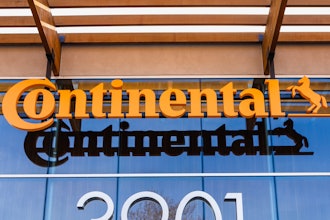
The European MRO market is a huge and exciting prospect for many top suppliers. However, it is also complex and, at times, contradictory. That’s why – right now – many are actively working to shift significant volumes into the distributor channel. It’s a simple, effective and low-cost way to access the market opportunity in Europe — and it’s a model they have already put to good use in the U.S.
Although Europe is the larger MRO consumer, the U.S. is a more mature market — a trait reflected in its consolidation. In the U.S., the main MRO providers have a combined 30%market share, while in Europe, the market is extremely fragmented: the top five players account for less than 8% of the market. In fact, the market leader, Rubix, makes up just 3% of the market — yet is twice the size of its nearest competitor.
There are several reasons why Europe has a more dispersed and diffused MRO market. Despite European Union efforts to harmonize trade and regulators, the region remains home to 44 nations with different languages, laws, customs and, in some cases, currencies. The market’s diversity, and its many manufacturing niches, demands specific expertise to serve it properly — making a cohesive, multi-country strategy across Europe a challenge.
Challenging Opportunity
All too often, American companies’ efforts to gain a foothold in Europe have been thwarted. They often try to impose U.S. business strategies on a market that does not have a U.S.-style distribution infrastructure. Europe lacks the large distribution partners that have made doing business in the U.S. easier — instead, American suppliers face putting boots on the ground in every target market. This could be their own personnel, a specialist dealer or sometimes several dealers per country in manufacturing heartlands like Germany. Managing sales across Europe in this manner is both costly and time consuming.
Overall, U.S. companies tend to underestimate the complexity and nuances of the European market. And, while many have tried, they’re not quite set up to manage those relationships themselves.
Cultural Shift
The emergence of multinational distributors, however, has disrupted the European MRO market. For the first time, major MRO suppliers can work with a European partner with the scale and expertise to penetrate multiple markets across the continent, offering the chance to significantly grow their businesses. This includes moving into different countries and regions, as well as new niche markets and sub-segments.
Distributors like Rubix – which has a strong multi-country presence – are leading a pan-European change in the MRO market.
Ultimately this makes European expansion far easier for U.S. suppliers. The major distributor model is a playbook they already know how to read and run. By replicating a U.S.-style model, they can gain a presence through an industry leader with the in-house expertise to properly support highly technical products.
Moreover, at the heart of this transition is changing customer demand. Manufacturers increasingly prefer to work with a one-stop shop because it shifts the administrative burden of managing many supplier relationships from the manufacturer to the distributor. Ultimately, this enables manufacturers to focus on their core business, rather than allocating resources to supplier management.
Suppliers previously worked with many small, local distributors to try and achieve pan-European coverage. Today, they see the value in partnering with larger players, who offer the best opportunity to capture market share in a simple, efficient and cost-effective way.
The Distributor Offer
When it comes to what a multi-country distributor can offer, several factors combine to make it a successful model.
While it is fair to carefully consider the trade-off between margins and growth, the return on investment from working with a distributor with multi-country representation can be impressive. Niche distributors often have a single-sided business model, but a major distributor will maximize market penetration with a multi-faceted approach. For example, Rubix works with many key client accounts on a contractual basis and often provide a bespoke blend of products and services to meet their specific needs. Other customers prefer a more transactional relationship, and we operate a “digital-first” strategy for these customers through a core offering on our online store.
To deliver success for both suppliers and customers, a distributor must break the mold. Distributors must be masters of all trades, offering the full range of products needed by maintenance teams and having the deep technical expertise to find the right product for each customer. Put simply, a distributor needs to know the product as well as the supplier that makes it. This is because the customer often does not know what they need – in many cases, they present a problem to solve and expect us to present the right solution.
This also extends to technical services. Examples at Rubix include our Condition Monitoring Platform, which detects defects early, helping to minimize factory downtime. We also offer air leak surveys to help customers reduce energy waste from compressor hose leaks, cutting both costs and carbon footprints.
Avoiding Pitfalls
Of course, such a seismic shift is not without its challenges. One of the first hurdles is how suppliers should manage and measure success from a distributor relationship. After all, a supplier does not want to sacrifice margin only to find that working with a distributor is simply moving sales from one pocket to another. Suppliers need confidence that the distributor is actively growing their business, and that comes through metrics and data.
Another challenge is that a sizable chunk of the European market still operates in diffused model of multiple distributors serving different countries and niche markets.
From the distributor’s perspective, securing margins is crucial. Maintaining the infrastructure and relationships to provide effective sales channels for MRO is expensive. Distributors, therefore, might ask for additional price support from suppliers to preserve profitability. This, however, can reduce the supplier’s margins, so they must weigh those costs against the potential benefits of reaching a much wider audience.
Scale Matters
Underpinning all these elements is one foundational fact: scale matters. The value proposition for both suppliers and customers only improves with scale, which has a flywheel effect. Scale enables distributors to secure range and availability from the biggest suppliers with the best possible commercial terms, and ensures the capability to properly penetrate multiple markets.
Suppliers should seek out a distributor with a truly pan-European footprint and an extensive network across dozens of countries — and thousands of employees with a broad depth of specialist knowledge combined with technical expertise.
The best multi-specialists offer an array of top-tier products and services, supported by a growing digital business. They present the perfect partnership opportunity for MRO suppliers seeking to make the most of the huge potential that the European market has to offer.
Lee Pruitt is the group chief digital and marketing officer at Rubix.























